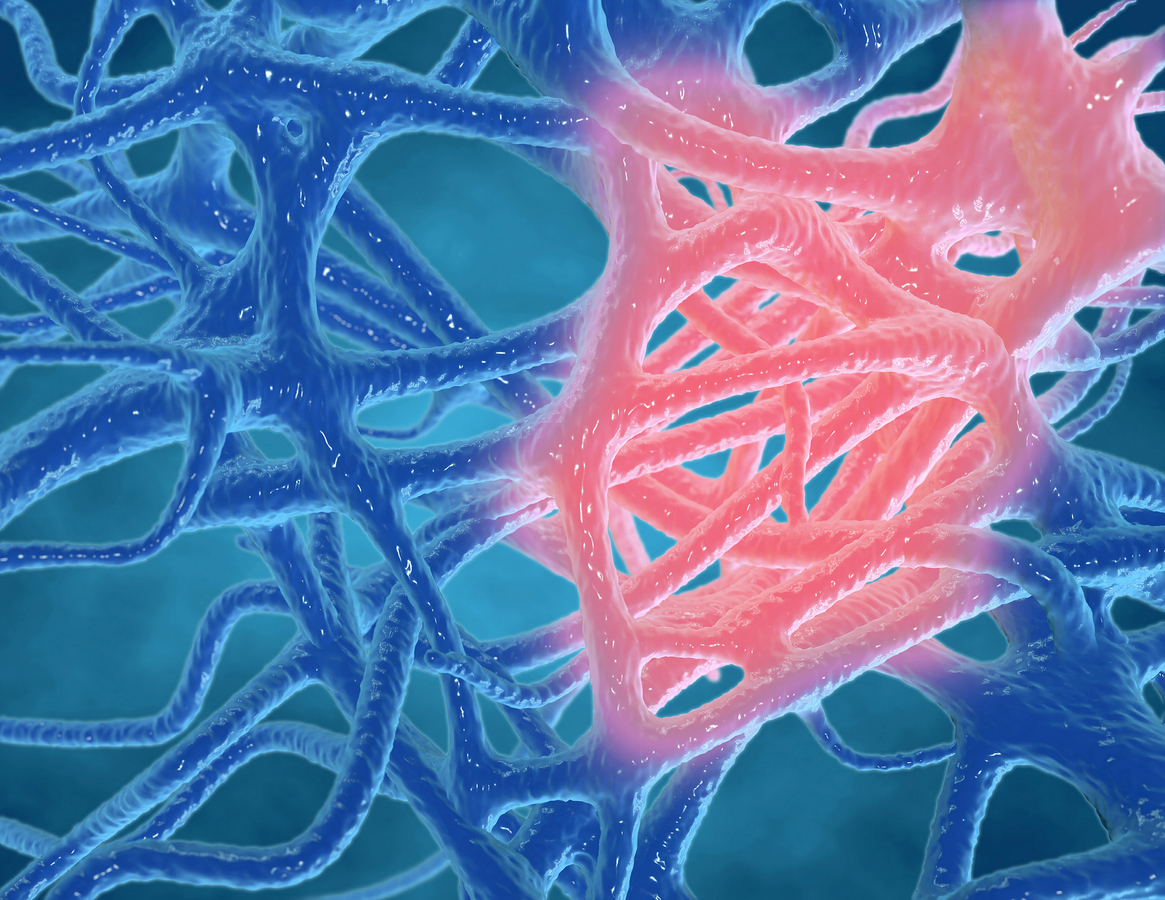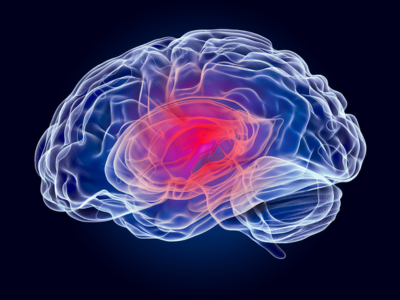Understanding Neuroinflammation Biomarkers
When we talk about biomarkers, we're referring to tangible biological signs that can help us understand the ins and outs of biological states, diseases, or responses to treatments(1). One of the intriguing areas where biomarkers are playing a pivotal role is neuroinflammation, a key player in neurodegenerative diseases.
Neuroinflammation, an inflammatory response in the nervous system, plays a significant role in development of chronic neurodegenerative diseases. Identifying biomarkers related to them can provide crucial insights into disease progression and pathogenesis, leading to the development of innovative treatment strategies(2).
Neuroinflammation biomarkers typically fall into three categories: cellular, molecular, and genetic. Cellular biomarkers involve alterations in cell populations, molecular biomarkers pertain to inflammatory molecules or proteins, and genetic biomarkers entail changes in gene expression related to inflammation (3, 4, 5).
The Role of Inflammatory Biomarkers in Neurodegenerative Diseases
Inflammatory biomarkers often undergo significant changes in neurodegenerative diseases such as Alzheimer's, Parkinson's Multiple Sclerosis, and Huntington's Disease. Research indicates that patients with these diseases have increased levels of pro-inflammatory cytokines, highlighting the significance of inflammation in disease progression (6, 7, 8, 9, 10).
Several biomarkers are directly related to specific neurodegenerative disorders. For example, Tau and phosphorylated Tau (p-Tau) proteins are linked to Alzheimer's disease, while alpha-synuciein is associated with Parkinson's disease. These biomarkers can be detected in various matrices like plasma, serum, and Cerebral Spinal Fluid (CSF), providing valuable insights into disease progression and pathogenesis (11, 12, 13).
Biomarkers have immense potential for early detection and monitoring disease progression in neurodegenerative disorders like Alzheimer's and Parkinson's (13). Timely diagnosis can significantly influence disease progression and enhance patient outcomes. By tracking specific biomarker levels, clinicians can detect pathological changes before clinical symptoms become evident, facilitating prompt intervention (14, 15).
Neuroinflammation Biomarker Research: The Road Ahead
As our understanding of neuroinflammation's role in neurodegenerative diseases deepens, the importance of biomarkers becomes increasingly evident (2, 16, 17). Accurate detection and measurement of these biomarkers not only assist in early detection but also help monitor disease progression and treatment response (18).
Advanced ultrasensitive biomarker detection technologies, such as MesoScale Discovery's Electrochemiluminescence (MSD-ECL) assays and Qunaterix's Single Molecule Array (SIMOA) assays are being utilized to identify new biomarkers and understand their roles (19, 20). Simultaneously, computational biology and machine learning techniques are assisting in the analysis and interpretation of complex biomarker data (21, 22).
The significance of neuroinflammation biomarkers in comprehending, diagnosing, and managing neurodegenerative illness cannot be overstated. As research and technology continue to advance, our knowledge of neuroinflammation and its biomarkers will improve, leading to better accuracy in diagnosis and more effective treatments for neurodegenerative diseases (23).
How PBL Assay Science Can Help
PBL Assay Science, backed by more than thirty years of profound experience in immunology-based research, products, and services, has positioned itself as a vital player in the industry. Our commitments to delivering high-quality assays and unparalleled expert services can empower researchers to accurately test vital biomarkers in their study samples. By choosing to work with us, you are not just gaining access to top-tier resource; you're also aligning with a team that prioritizes accuracy, reliability, and your research success. Trust in our expertise, and let's explore the boundaries of scientific discovery together.
References
(1): Strimbu, K., & Tavel, J. A. (2010). What are biomarkers? Current Opinion in HIV and AIDS, 5(6), 463–466.
(2): Russo, I., & Barlati, S. (2019). Neuroinflammatory Targets for the Treatment of Neurodegenerative Diseases. Cells, 8(8), 974.
(3): Loane, D. J., & Byrnes, K. R. (2010). Role of microglia in neurotrauma. Neurotherapeutics, 7(4), 366-377.
(4): Hu, X., Leak, R. K., Shi, Y., Suenaga, J., Gao, Y., Zheng, P., & Chen, J. (2015). Microglial and macrophage polarization—new prospects for brain repair. Nature reviews Neurology, 11(1), 56-64.
(5): Tai, L. M., Ghura, S., Koster, K. P., Liakaite, V., Maienschein-Cline, M., Kanabar, P., Collins, N., Ben-Aissa, M., Lei, A. Z., Bahroos, N., Green, S. J., Hendrickson, B., Van Eldik, L. J., & LaDu, M. J. (2015). APOE-modulated Aβ-induced neuroinflammation in Alzheimer’s disease: current landscape, novel data, and future perspective. Journal of Neurochemistry, 133(4), 465-488.
(6): Wyss-Coray, T., & Rogers, J. (2012). Inflammation in Alzheimer disease—a brief review of the basic science and clinical literature. Cold Spring Harbor Perspectives in Medicine, 2(1), a006346.
(7): Tansey, M. G., & Goldberg, M. S. (2010). Neuroinflammation in Parkinson’s disease: its role in neuronal death and implications for therapeutic intervention. Neurobiology of Disease, 37(3), 510-518.
(8): Lassmann, H. (2018). Pathogenic Mechanisms Associated With Different Clinical Courses of Multiple Sclerosis. Frontiers in Immunology, 9, 3116.
(9): Labbadia, J., & Morimoto, R. I. (2013). Huntington’s disease: underlying molecular mechanisms and emerging concepts. Trends in Biochemical Sciences, 38(8), 378–385.
(10): Block, M. L., & Hong, J. S. (2005). Microglia and inflammation-mediated neurodegeneration: multiple triggers with a common mechanism. Progress in Neurobiology, 76(2), 77-98.
(11): Blennow, K., & Hampel, H. (2003). CSF markers for incipient Alzheimer’s disease. The Lancet Neurology, 2(10), 605-613.
(12): Shi, M., Bradner, J., Hancock, A. M., Chung, K. A., Quinn, J. F., Peskind, E. R., Galasko, D., Jankovic, J., Zabetian, C. P., Kim, H. M., Leverenz, J. B., Montine, T. J., Ginghina, C., Edwards, K. L., & Zhang, J. (2011). Cerebrospinal fluid biomarkers for Parkinson disease diagnosis and progression. Annals of Neurology, 69(3), 570-580.
(13): Teunissen, C. E., Petzold, A., Bennett, J. L., Berven, F. S., Brundin, L., Comabella, M., Franciotta, D., Frederiksen, J. L., Fleming, J. O., Furlan, R., Hintzen, R. Q., Hughes, S. G., Johnson, M. H., Krasulova, E., Kuhle, J., Magnone, M. C., Rajda, C., Rejdak, K., Schmidt, H. K., … Deisenhammer, F. (2009). A consensus protocol for the standardization of cerebrospinal fluid collection and biobanking. Neurology, 73(22), 1914-1922.
(14): Song, L., & Pei, L. (2017). A Review of Biomarkers in Alzheimer’s Disease. Neurological Sciences and Neurophysiology, 34(3), 165-173.
(15): Goetzl, E. J., Boxer, A., Schwartz, J. B., Abner, E. L., Petersen, R. C., Miller, B. L., & Kapogiannis, D. (2015). Altered lysosomal proteins in neural-derived plasma exosomes in preclinical Alzheimer disease. Neurology, 85(1), 40-47.
(16): Russo, I., & Barlati, S. (2019). Neuroinflammatory Targets for the Treatment of Neurodegenerative Diseases. Cells, 8(8), 974.
(17): Rubio-Perez, J. M., & Morillas-Ruiz, J. M. (2012). A review: inflammatory process in Alzheimer’s disease, role of cytokines. The Scientific World Journal, 2012, 756357.
(18): Saresella, M., La Rosa, F., Piancone, F., Zoppis, M., Marventano, I., Calabrese, E., Rainone, V., Nemni, R., Mancuso, R., & Clerici, M. (2016). The NLRP3 and NLRP1 inflammasomes are activated in Alzheimer’s disease. Molecular Neurodegeneration, 11, 23.
(19): Rissin, D. M., Kan, C. W., Campbell, T. G., Howes, S. C., Fournier, D. R., Song, L., Piech, T., Patel, P. P., Chang, L., Rivnak, A. J., Ferrell, E. P., Randall, J. D., Provuncher, G. K., Walt, D. R., & Duffy, D. C. (2010). Single-molecule enzyme-linked immunosorbent assay detects serum proteins at subfemtomolar concentrations. Nature Biotechnology, 28(6), 595-599.
(20): Deo, R. C. (2015). Machine Learning in Medicine. Circulation, 132(20), 1920-1930.
(21): Obermeyer, Z., & Emanuel, E. J. (2016). Predicting the Future — Big Data, Machine Learning, and Clinical Medicine. The New England Journal of Medicine, 375(13), 1216-1219.
(22): Aliper, A., Plis, S., Artemov, A., Ulloa, A., Mamoshina, P., & Zhavoronkov, A. (2016). Deep learning applications for predicting pharmacological properties of drugs and drug repurposing using transcriptomic data. Molecular Pharmaceutics, 13(7), 2524-2530.
(23): Rauf, A., Badoni, H., Abu-Izneid, T., Olatunde, A., Rahman, M. M., Painuli, S,, Semwal, P,, Wilairatana, P,, & Mubarak, M,S. (2022). Neuroinflammatory Markers: Key Indicators in the Pathology of Neurodegenerative Diseases. Molecules, 27(10):3194.
